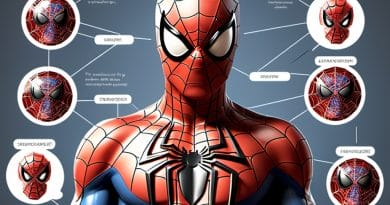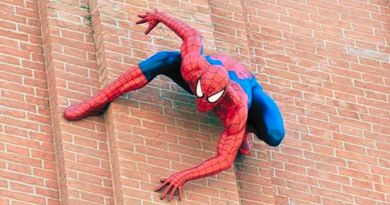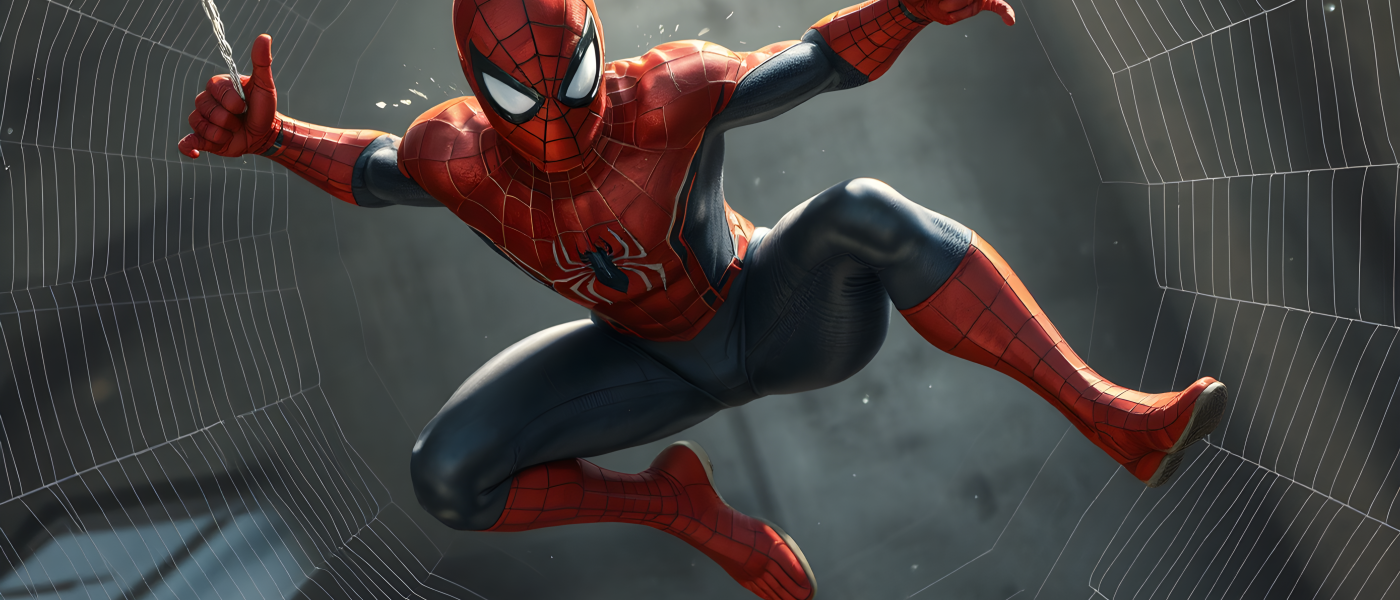Physics of Spiderman Part 3
Strength of Spider Silk – Webbing
Spider-Man’s webbing, as depicted in comics and movies, is portrayed to be incredibly strong—often described as having properties superior to steel. To evaluate how strong the webbing is, it’s helpful to compare it to the real-life material it is inspired by: spider silk.
Real spider silk is an astonishing natural material known for its combination of strength and elasticity. Here are some key properties of spider silk that are relevant when considering the strength of Spider-Man’s webbing:
-
- Tensile Strength:
-
- Spider silk has a tensile strength of approximately 1.0 to 1.5 GPa (Gigapascals). To put this in perspective, steel has a tensile strength of around 0.4 to 2 GPa, depending on the alloy. This means spider silk, and thus Spider-Man’s webbing, is roughly as strong or stronger than steel on a per-weight basis.
-
- Spider-Man’s webbing is often said to have a tensile strength of 1.2 GPa or higher, meaning it could theoretically support a lot of weight without snapping.
-
- Tensile Strength:
-
- Elasticity:
-
- Spider silk is also incredibly elastic. It can stretch up to four times its original length without breaking, which gives it remarkable toughness (a combination of strength and stretchiness). This elasticity allows Spider-Man’s webbing to absorb the shock of sudden loads, such as when he swings between buildings or catches heavy falling objects.
-
- Elasticity:
-
- Toughness:
-
- The toughness of spider silk refers to its ability to absorb energy without breaking, which is measured in terms of Joules per cubic meter. Spider silk has a toughness of 150-200 MJ/m³, which is much higher than Kevlar, the material used in bulletproof vests. This makes Spider-Man’s webbing capable of handling extreme forces, like catching a speeding train (as shown in some Spider-Man films).
-
- Toughness:
Strength to Weight Ratio
Spider silk also has a superior strength-to-weight ratio compared to many artificial materials. It’s stronger than Kevlar (the material used in body armor), and it is much lighter. In terms of Spider-Man’s webbing, this means that while the webbing is strong enough to hold heavy loads, it can also be deployed in a thin, lightweight form—perfect for portability and practical use in urban environments.
Hypothetical Webbing Capacity
To understand just how strong Spider-Man’s webbing could be, consider a few examples from his superhero feats:
-
- Stopping a Moving Train:
-
- In “Spider-Man 2,” Peter Parker stops a moving train using multiple strands of webbing attached to nearby buildings. The force required to stop a full-speed train is immense, likely in the range of millions of Newtons. The webbing must therefore be capable of withstanding those high stresses without breaking.
-
- Stopping a Moving Train:
-
- Holding Falling Objects:
-
- The webbing is frequently depicted as being able to catch and support falling objects, like cars or even parts of buildings. To prevent such objects from falling to the ground requires withstanding both static and dynamic loads, meaning that the webbing can not only hold a heavy object but can also withstand the sudden, high-impact forces when the object first hits the web.
-
- Holding Falling Objects:
-
- Swinging from Buildings:
-
- When Spider-Man swings between buildings, the webbing acts like a pendulum. At the lowest point of the swing, the force in the web is not just Spider-Man’s weight but also includes the additional centripetal force due to his velocity, potentially doubling or tripling the load that the webbing must bear. For Spider-Man, who weighs roughly 75 kg (165 lbs), the webbing could need to hold forces upwards of 1,000 N or more during rapid swings.
-
- Swinging from Buildings:
Comparing to Other Materials
For reference, here’s how spider silk and, by extension, Spider-Man’s webbing compares to other materials:
-
- Steel: Tensile strength of 400-2,000 MPa, density of 7,850 kg/m³.
-
- Kevlar: Tensile strength of around 3,620 MPa, high toughness, density of 1,440 kg/m³.
-
- Spider Silk: Tensile strength of 1,000-1,500 MPa, density of about 1,300 kg/m³.
Spider silk is often considered five times stronger than steel by weight. If Spider-Man’s webbing is similar or even more advanced, it could be one of the strongest materials known, combining both high tensile strength and extreme elasticity.
That said, real world scientists can already replicate spider webbing. But as seen below, we’re a long way from creating anything near the tensile strength Peter Parker Achieved.
Conclusion: The Strength of Spider-Man’s Webbing
Spider-Man’s webbing, as imagined in the comics and movies, likely has properties that make it:
-
- Stronger than steel by weight.
-
- Extremely elastic, capable of stretching significantly without breaking.
-
- Tough and resilient, able to absorb large amounts of energy.
The strength and resilience of his webbing enable Spider-Man to perform extraordinary feats, like supporting the weight of buildings, stopping speeding vehicles, and swinging effortlessly between skyscrapers. If we assume his webbing is an enhanced or synthetic version of natural spider silk, it represents a nearly ideal combination of tensile strength, elasticity, and toughness, making it one of the most versatile materials in superhero fiction.

Physics of Spiderman Part 1
Spider-Man’s powers, while fictional, can be explored through physics concepts to understand how they might work in a scientific context.

Physics of Spiderman Part 2
Wall crawling Van der Waals forces are weak intermolecular forces that occur between molecules or atoms. These forces play a
Author
-

I'm a freelancer writer for Heroic Clash. I've also written for CBR, MovieSource, and Inquistr
View all posts

